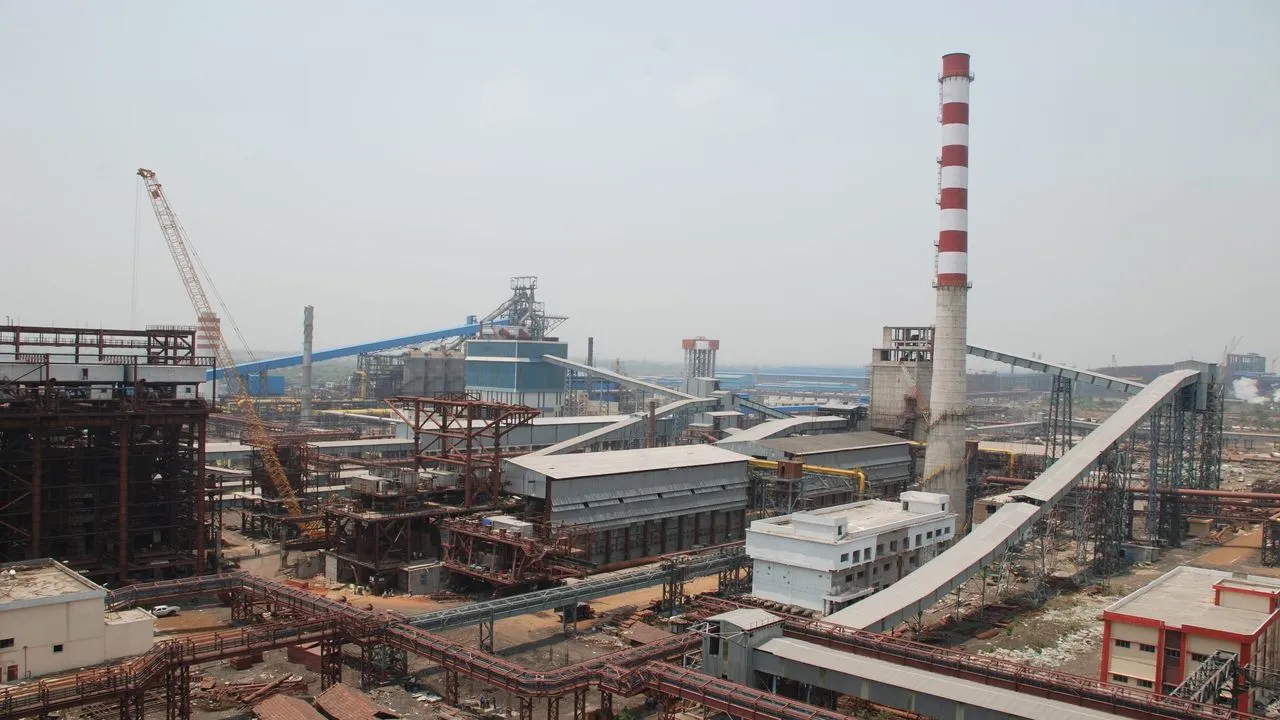The Telugu Desam Party-Jana Sena coalition government in Andhra Pradesh, key allies of the Bharatiya Janata Party-led National Democratic Alliance (NDA) coalition in the centre, had earlier assured they would prevent the privatisation of the plant and work to secure a financial package.
Published Jan 17, 2025 | 5:37 PM ⚊ Updated Jan 17, 2025 | 5:37 PM

Visakhapatnam Steel Plant.
The Union Government has reportedly cleared a ₹11,500 crore package to revive the Visakhapatnam Steel Plant (VSP), potentially infusing a new lease of life into the loss-making facility.
This rescue package follows widespread protests against Finance Minister Nirmala Sitharaman’s announcement in Parliament regarding the plant’s potential sale. Since then, labour unions have fought to preserve the plant.
The plant faces severe financial strain due to working capital debts, insufficient raw materials, court attachments and insolvency proceedings. The Telugu Desam Party-Jana Sena coalition government in Andhra Pradesh, key allies of the Bharatiya Janata Party-led National Democratic Alliance (NDA) coalition in the centre, had earlier assured they would prevent the privatisation of the plant and work to secure a financial package.
The pressure applied by the state ruling coalition on the centre was reportedly instrumental in securing the rescue package.
The central government had earlier informed a parliamentary standing committee that it was preparing a comprehensive plan to rescue the plant and prevent future challenges. The committee had recommended immediate action.
The rescue package will reportedly raise ₹10,300 crore through bond redemption, whilst securing the remaining ₹1,200 crore through alternative means. This intervention mirrors a similar rescue in 1996, when the Vajpayee government provided a ₹1,100 crore package that stabilised the company.
In the last few years, the beleaguered plant has recorded substantial losses, with ₹4,848 crore in 2023-24 and ₹2,858 crore in 2022-23, despite possessing an annual production capacity of 7.3 million tonnes. Mounting debts for working capital have exacerbated these losses.
Speaking to South First, J Ayodhya Ramu, Vice President of the Steel Workers Federation of India (SWFI) and Chairman of the Visakha Steel Protection Struggle Committee, said, “We have heard that the central government has announced assistance of Rs 10,000– Rs 11,000 crore for the Visakhapatnam Steel Plant. Some say this will be in the form of bonds, while others claim it will be a loan. There is no clarity on this. The coalition government’s pressure in Andhra Pradesh led to the announcement of this package. However, this package alone will not be sufficient for the survival of the steel plant. Merging Visakhapatnam Steel Plant with SAIL and allocating captive mines are critical to its longevity.”
Muppalla Subba Rao, trade union leader and President of the Andhra Pradesh State Human Rights Council, said, “Private steel plants do not face losses because they are allocated iron ore mines. Similarly, Visakhapatnam Steel Plant should also be allocated mines. Despite having a capacity of 7.3 million tons, the plant is not operating at full capacity. This issue needs attention.”
“Under SAIL’s administration, there are extensive iron ore mines spanning thousands of acres. If Visakhapatnam Steel Plant is merged with SAIL (Steel Authority of India Limited), the plant can be operated profitably with these mines, saving thousands of workers from being thrown into the streets,” Rao said.
Centre of Indian Trade Unions State General Secretary Narsinga Rao highlighted the plant’s previous success. “VSP had achieved 120 percent of its production capacity, setting records. In the past 30 years, the centre has not provided even a single rupee. The plant increased its capacity from 3.2 million tons to 7.3 million tonnes per year using its own funds. Even during the COVID-19 pandemic, the plant generated profits. To ensure the survival of such an organisation, immediate allocation of captive mines is essential. The centre must take the initiative,” he said.
(Edited by Dese Gowda)
